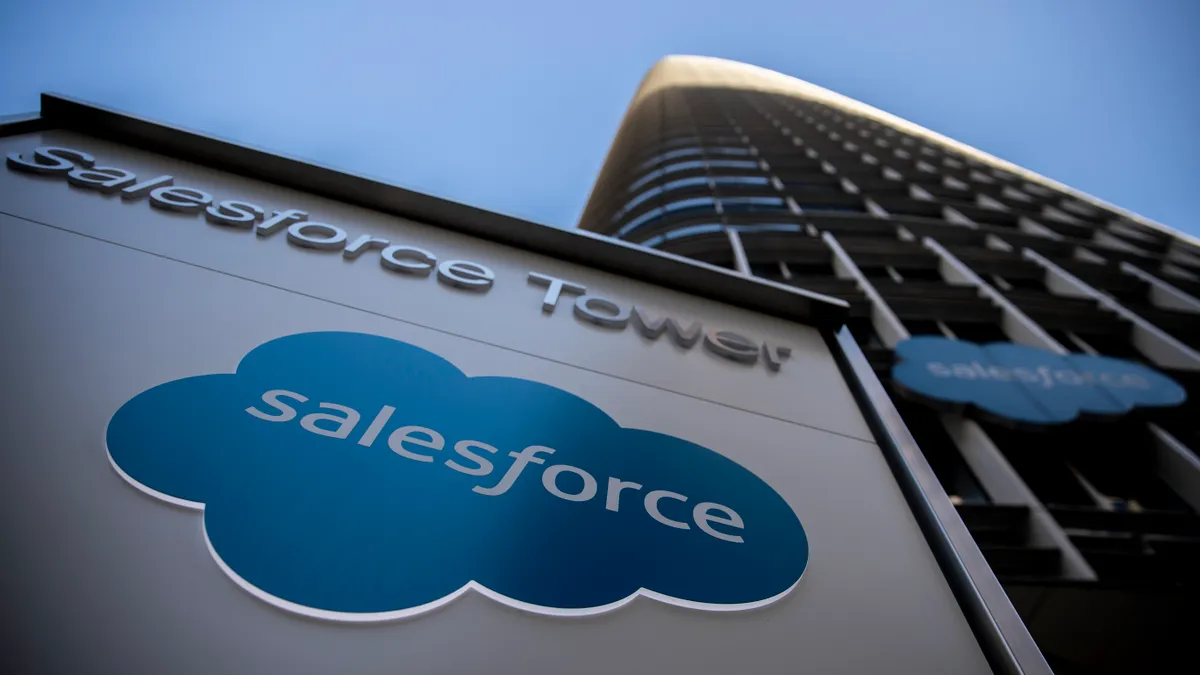Dive Brief:
- Salesforce tapped Bret Taylor, president and COO, to join Marc Benioff as co-CEO at the software firm, the company announced Tuesday.
- Taylor, who joined Salesforce in 2016 following the company's acquisition of Quip, was among the architects of the $27.7-billion deal to acquire Slack. Salesforce did not immediately respond to questions regarding the reporting structure for Taylor's new role.
- Salesforce also announced its third quarter earnings report on Tuesday, with year-over-year revenues up 27%, reaching $6.8 billion.
Dive Insight:
Salesforce's acquisition of Slack, which closed in July, painted a clear vision of Salesforce's aspirations in the enterprise software market. Whether cloud, customer relationship management or collaboration, the company is pitching itself as a wraparound tool to boost business operations.
The vision connects with Benioff's moonshot revenue goal of reaching $50 billion by 2026. Taylor in the co-CEO chair means Salesforce gains a more technical, product-focused vision at the upper level of management.
"Marc Benioff's heritage … is he's a marketing guy," said Scott Bickley, principal research director at Info-Tech Research Group. "He was a marketing guy for Larry Ellison at Oracle. He came out and started Salesforce, and he's great at understanding customer needs, and then building the teams to realize those product divisions. He's not a technologist himself."
In Taylor, the company gains a leader "who can drive the technology roadmap" ahead of its ambitious revenue goal, which will require the type of growth spurts that acquisitions can deliver, according to Bickley.
The next stage of the growth playbook will also follow a trend playing out across the cloud market: building solutions with a sharp industry focus.
"They've created this holistic ecosystem," said Bickley. "Where they're really going with this now is … hyper-growth mode into the industry vertical specialization."
One challenge for Salesforce's 360-degree vision: shaping how the different products it owns and operates will work together. The company has "had a more hit-or-miss track record" in terms of product integration, said Bickley.
"I think Brett wants to shore that up," he said. "He wants to make these things seamless, and he definitely can do it. If he's able to close the gaps and make this a seamless experience for customers, then he will have built one of his big mission mandates."












